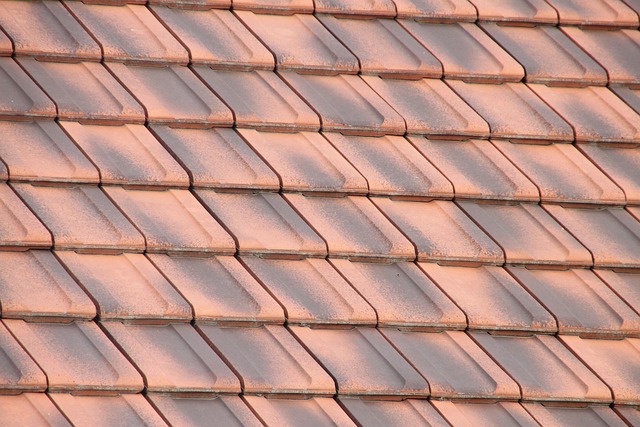Planning a residential flat roof installation with HVAC compatibility requires addressing unique challenges: robust structural support for heavy equipment, specialized materials & techniques for integrity, custom flashing systems, proper drainage, and matching capacity/efficiency ratings with existing HVAC systems. Prioritizing structural integrity, ventilation, alignment, and smart integration strategies ensures optimal performance, energy efficiency, and comfort through proper planning and regular maintenance.
When installing or upgrading a rooftop HVAC system, ensuring compatibility with existing equipment is paramount for a seamless, energy-efficient home climate control. This article guides you through the essential aspects of residential flat roof installation, focusing on harmonizing new systems with your current setup. We’ll explore requirements, compatibility assessment, alignment factors, common challenges, and best practices to ensure your rooftop HVAC integrates smoothly into your home’s overall comfort and efficiency.
Understanding Residential Flat Roof Installation Requirements
When considering HVAC compatibility for a rooftop setup, understanding the unique requirements of residential flat roof installations is paramount. This type of roofing presents specific challenges and considerations that differ from sloped or traditional roofs. Flat roofs demand robust, level support structures capable of withstanding heavy equipment like HVAC units.
Residential flat roof installations often involve specialized materials and techniques to ensure structural integrity and longevity. These may include reinforced decking, waterproof membranes, and custom-designed flashing systems tailored to the HVAC unit’s shape and size. Proper drainage is another critical aspect, as flat roofs require efficient water runoff to prevent pooling and potential damage to the roofing system and underlying structure.
Assessing Compatibility with HVAC Systems
When planning a residential flat roof installation, ensuring compatibility with existing HVAC (Heating, Ventilation, and Air Conditioning) systems is paramount. This involves understanding the capacity and efficiency ratings of both the new roofing system and the HVAC equipment. Flat roofs, in particular, often host various equipment like air conditioners, exhaust fans, and ventilation systems. Compatibility checks should consider the weight load capabilities of the roof structure to ensure these additions don’t compromise structural integrity.
Assessing compatibility also includes examining energy efficiency and performance. Modern HVAC systems are designed with advanced features that can optimize energy use and indoor comfort. Ensuring these systems integrate seamlessly with your new flat roof installation can lead to better temperature regulation, reduced energy costs, and longer-lasting equipment. Proper assessment helps avoid potential issues like poor air circulation, inefficient cooling or heating, and premature equipment failure.
Key Factors for Ensuring Equipment Alignment
When aligning equipment for a residential flat roof installation, several key factors come into play to ensure optimal performance and compatibility. One of the primary considerations is the structural integrity of the roof itself. Flat roofs require reinforced framing to support the weight of HVAC systems, especially in regions with heavy snowfall or extreme temperatures. Proper roof construction, including adequate trusses or beams, is essential to prevent excessive strain on equipment attachments.
Additionally, the location and orientation of the roof play a significant role. For optimal equipment placement, consider the sun’s path during different seasons; shading can impact equipment efficiency. Adequate clearance for ventilation and maintenance access points should also be factored in, ensuring easy installation and future servicing. Proper alignment ensures that HVAC systems function efficiently, prolonging equipment lifespan and maintaining comfortable indoor environments.
Common Challenges During Integration and Solutions
During the integration process of new HVAC systems with existing rooftop equipment, several common challenges arise, particularly in residential flat roof installations. One major hurdle is ensuring seamless connectivity between new and old systems due to varied technology and control interfaces. Compatibility issues can lead to inefficient operation, increased energy consumption, and even potential system failure.
To overcome these challenges, smart integration strategies are essential. Adopting universal communication protocols like Modbus or BACnet enables easy data exchange between different components. Upgrading controllers with modern, compatible firmware ensures efficient control and monitoring. Regular maintenance checks and proactive troubleshooting also play a significant role in maintaining optimal performance and compatibility over time.
Best Practices for a Seamless Rooftop Setup
When setting up HVAC equipment on a rooftop, adhering to best practices ensures a seamless and efficient system. For a residential flat roof installation, start by assessing the available space and selecting equipment suited for your climate zone. Proper sizing is crucial; an oversized unit may waste energy while an undersized one won’t adequately heat or cool. Next, consider the roof’s structural integrity; consult with professionals to ensure it can support the weight of the equipment. Proper drainage and ventilation are also essential. Ensure the roof is properly sealed around the equipment to prevent leaks, and maintain adequate airflow to avoid excessive wear and tear on the system.
Regular maintenance plays a vital role in longevity and performance. Schedule routine inspections and cleaning to keep your rooftop HVAC running optimally. Remember, a well-planned and maintained setup translates into energy efficiency and comfort for homeowners.
When undertaking a residential flat roof installation, seamless integration with existing HVAC systems is paramount. By understanding compatibility requirements, assessing equipment alignment, and adopting best practices, homeowners can ensure their rooftop setups are both functional and efficient. Addressing potential challenges proactively through tailored solutions further reinforces the longevity and performance of these critical components in any property’s landscape.
